
The Energy sector is not only an important part of a nation’s infrastructure, but also key to strengthen long-term industry investments. Offshore wind power is essential to the overall energy picture, because it offers several advantages – it does not compete for limited land space, and it accesses the more abundant wind resources that prevail at sea. This is why Offshore Wind is such an important source of energy today and is one of the fastest growing energy solutions globally.
The lifespan of an offshore wind farm (OWF) can be as long as 25 to 30 years and typically goes through four cycles: “Development & Planning” during which the OWF is planned and preparations are made, “Construction” during which the equipment is installed, “Operation & Maintenance” where energy is generated, and “Decommissioning” during which the OWF is built back or undergoes repowering, which means that the older Wind Turbine Generators are replaced with newer ones.

The life cycle of an offshore wind farm includes: development & planning, construction, operation & maintenance, and decommissioning. (Source: EnBW)
Development & Planning – preparation before offshore wind farm construction
OWFs are large-scale infrastructure investments. For developers every offshore wind farm represents an enormous investment. Performing diligent investigations is paramount. This not only helps the developer to identify optimal sites and to make the best possible construction plans, but also enables better anticipation of possible challenges during the construction stage. Furthermore, a detailed investigation report supported by third-party certification provides greater assurance to lenders and investors.
Development & planning typically takes one to five years, and the investigation generally evaluates two crucial aspects: “offshore wind farm potential” and “development impact.” The former involves such research as wind power potential studies and offshore construction surveys, whereas the latter focuses on reducing possible impacts from construction on the ecosystem.
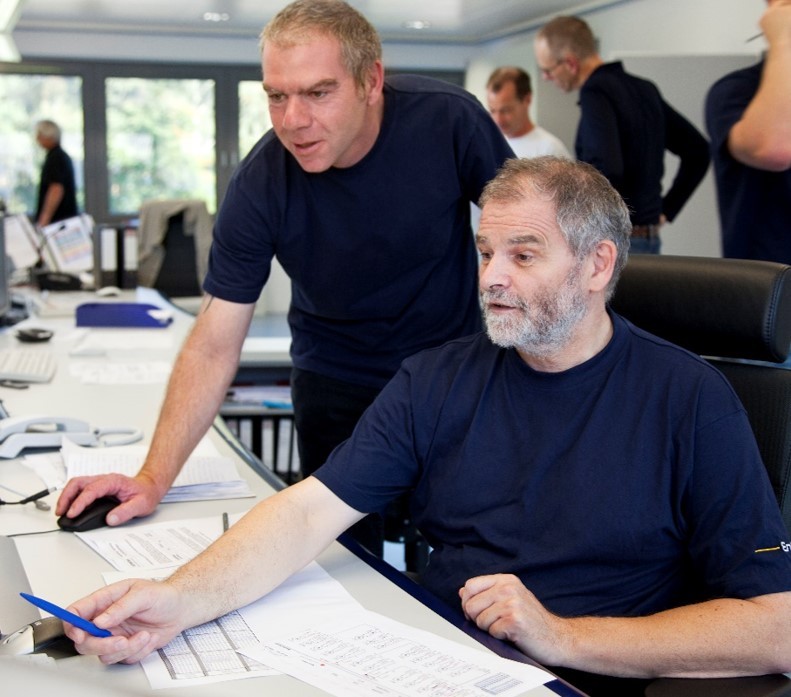
Planning and investigation are critical prior to the construction of an offshore wind farm and must be carried out with the utmost diligence. (Source: EnBW)
Energy Yield Assessment – finding potential sites and the best form of deployment
An offshore wind farm can have a capacity of anything from tens to hundreds of megawatts. A miscalculation of the energy yield or wind power potential may cause an offshore wind farm to perform below its expected capacity and lead to less power production and thus economic losses. For this reason, wind power surveys serve as a very important reference for site selection.
In a wind power assessment, researchers analyze climate observations and perform simulations to determine average wind speed and climate characteristics at the potential site. Based on these findings, researchers can estimate the location’s potential economic benefits. Due to frequent occurrences of typhoons during summer, estimation of extreme wind speeds becomes critical for offshore wind farm projects in Taiwan. With historical wind speed data gathered from previous typhoons in Taiwan, developers is able to estimate extreme wind speeds for the last 50 years using WAsP, a wind speed evaluation software package developed by the Technical University of Denmark. By establishing a guideline on extreme wind speeds, developers are able to determine the required level of wind resistance for a specific location where wind turbines are to be installed.
According to analyses performed by NASA, coastal areas off Changhua in western Taiwan are characterized by average wind speeds of more than 7m/s and average wind power density of more than 750W/m2 all year long. [Note 1]. According to the “Global Offshore Wind Speeds Ranking” published by international consultancy company 4C Offshore, 16 of the world’s 20 most ideal wind sites are located in the Taiwan Strait [Note 2]. Inarguably, Taiwan’s offshore wind power development has significant potential.
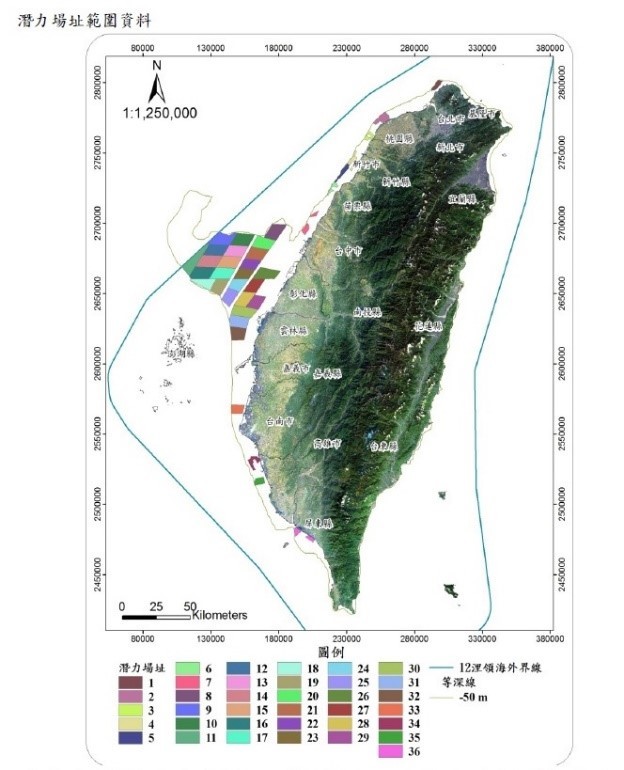
For the first large-scale OWF developments in Taiwan, the Bureau of Energy analyzed the offshore environment around Taiwan and identified 36 potential sites for offshore wind farm development and in 2016 made them available to interested parties. (Source: Ministry of Economic Affairs)
Offshore Geological Survey – studying the environment under water
Geological uncertainty is one of the most significant cost variation factors in offshore wind farm construction. To ensure that all offshore wind farm equipment can be installed onto the seabed in a secure and structurally safe manner, researchers must do a geological survey of the offshore wind farm site before any construction begins, studying its geological characteristics, the underwater terrain, the possible existence of archaeological artifacts, and risks of soil liquification. The survey findings also enable developers to make more comprehensive plans about the construction method, turbine position, and subsea cable layout.
Environmental Impact Assessment – measuring the effects on nature
In addition to conducting detailed survey of the underwater conditions, it is also necessary to assess impacts to the surrounding environment during the development & planning stage. Studies in this respect are focused on the marine ecosystem, migration routes of birds, natural life along onshore cables and near onshore substations, fishery resources and fishing routes.
In Taiwan, the Ministry of Economic Affairs has already excluded areas of high environmental sensitivity [Note 3] when publishing its list of 36 potential sites; furthermore, developers are required to submit an “Environmental Impact Assessment Report” and have it reviewed and approved by the Environmental Impact Assessment Review Committee under the Environmental Protection Agency (EPA) in accordance with the Environmental Impact Assessment Act before proceeding with construction activities. For example, the project that EnBW and her partners are developing- Formosa III –passed its environmental impact assessment in February 2018, and is expected to play a prominent role in phase 3 of Taiwan’s offshore wind development program.
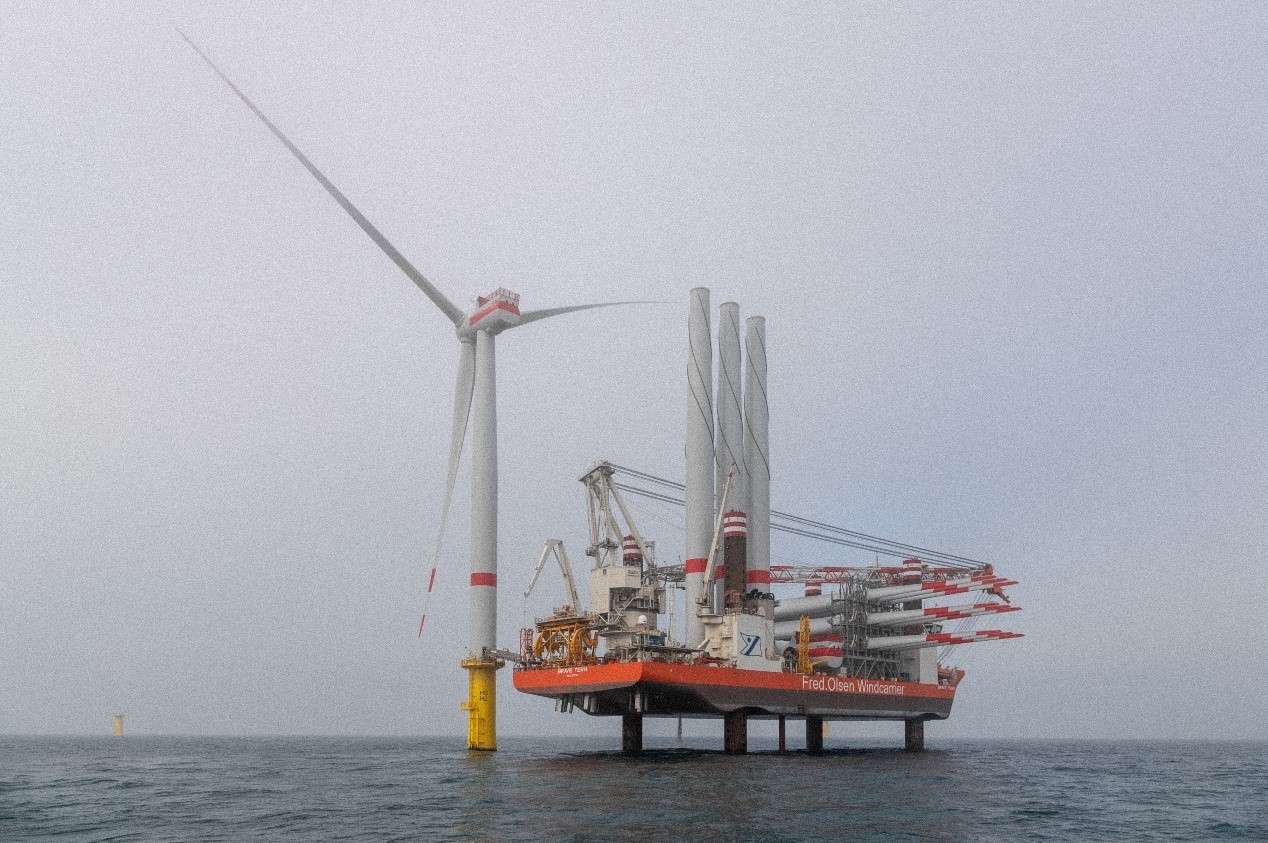
In Taiwan, construction of offshore wind farms may commence only after they pass an environmental impact assessment. (Source: EnBW)
To ensure the performance of an offshore wind farm over its 20 to 25-year lifespan, all developers have to commit significant resources and manpower to site surveys and planning before wind turbines can be constructed in the seabed. Meanwhile, the government and research institutes are actively engaging foreign institutions for independent third-party certification, so that the public can be better informed of the risks of offshore wind farm development and respond accordingly. In June 2019, a group of representatives from CR Classification Society, Ship and Ocean Industries R&D Center, and the Taiwan Accreditation Foundation visited EnBW’s offshore wind center in Hamburg, Germany, to learn about Project Certification and other third-party certification.
While Formosa III has yet to obtain grid approval in Taiwan, its survey and planning efforts are gradually approaching completion. Upon completion, the 3 offshore wind farms with a total capacity of 2GW will represent a new milestone in Taiwan’s renewable energy development.
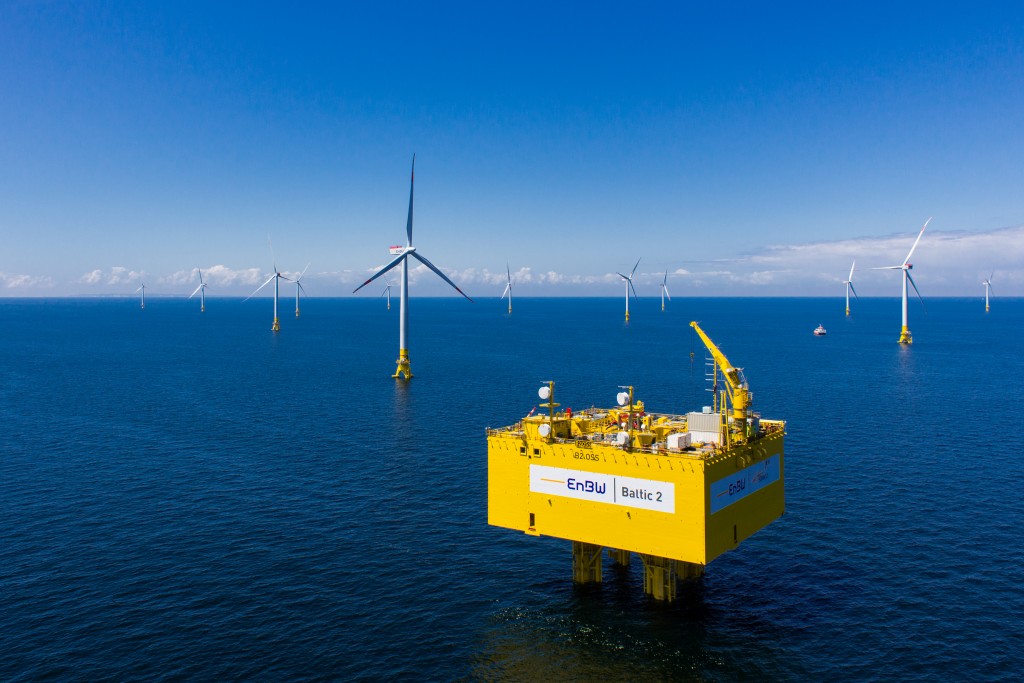
An offshore wind farm consists of wind turbines, array cables (undersea cables), an offshore substation, export cables, and an onshore substation. The wind turbines catch wind at sea and convert its movement into electricity. This electricity is carried through array cables to the offshore substation where it is maximized the voltage and transmitted through export cables and onshore cables to the onshore substation. The onshore substation converts the incoming electricity to be fed into the power grid for distribution to factories and households. All this equipment is essential for electricity to complete its "journey.”

Electricity generated from an offshore wind farm has to go through subsea cables, an offshore substation and an onshore substation before reaching household users. (Source: EnBW)
The "indispensable teammates" of offshore wind turbines
Wind turbines are often regarded as the most critical components in an offshore wind farm (extended reading: Insight into an offshore wind farm: Turbines – powering offshore wind farms.) However, according to the research conducted by Ship and Ocean Industries R&D Center in 2016, wind turbines only accounted for 41% of the total cost of an offshore wind farm [Note 1], compared to 80% of an onshore wind farm. The study shows that components other than wind turbines also play a significant role in an offshore wind farm. Let’s take a closer look at the "teammates" that support offshore wind turbines!

Cost analysis for offshore and onshore wind farms in Europe. (Information Source: Ministry of Economic Affairs)
Offshore substation
The offshore substation is mainly responsible for consolidating electricity generated from offshore wind turbines and converting it to the appropriate voltage, so that electricity can be transmitted through export cables and into the power grid with minimal potential electrical losses. An offshore substation is typically equipped with a step-up converter, data gathering and monitoring system, diesel generator, alarm system, and marine communication system. To withstand the strong winds, water currents, high salt content and corrosive environment at sea, an offshore substation has to be built within an enclosed steel structure, and all metallic components must be treated to resist corrosion. This requirement makes construction and maintenance of offshore substations much more difficult compared to their onshore counterparts.

EnBW's offshore substation at Baltic 2. (Source: EnBW)
Subsea cables and onshore cables
Subsea cables are the artery that connect an offshore wind farm to the power grid on shore. Subsea cables laid between wind turbines are called "array cables," and they connect wind turbines in a series array. Subsea cables used for transmitting electricity from an offshore wind farm to shore are called "export cables"; they connect to onshore cables, which then take over power transmission on land. Compared to onshore wind power, offshore wind power is presented with more uncertain sea conditions and weather, and a greater number of variables including water depth, geological conditions, seabed changes and sea currents need to be taken into account. These technical difficulties are reflected in the higher development costs. Taiwan’s Ship and Ocean Industries R&D Center also reports that installation of subsea cables alone accounts for 13% of the total cost of an offshore wind farm [Note 2], which is even higher than the cost of a substation (5%). This cost breakdown shows just how critical subsea cables are to an offshore wind farm.
EnBW laying array cables in its offshore wind farm. (Source: EnBW)
Onshore substation
The onshore substation is the part of an offshore wind farm responsible for distributing electricity into the power system on land. Its main task is to adjust electricity to the appropriate voltage before joining the power grid to meet the needs of different users. In Taiwan, for example, electricity generated from offshore wind farms is stepped down to 22-11 kV at a primary substation to supply small and medium industrial users, or it is stepped down at a distribution substation or secondary substation for domestic use [Note 3].

Electricity generated from an offshore wind farm, once stepped down, can be connected to the power grid and distributed to users. (Source: EnBW)
New opportunities from an emerging industry
Every equipment used in offshore wind power involves intricate technologies and requires the support of a strong supply chain. To succeed, the industry requires talents from a wide variety of disciplines, including marine engineering, electrical engineering, project management, and offshore wind farm operations & maintenance.
Scheduled for completion in the end of 2019, EnBW's Hohe See and Albatros projects (currently the largest offshore wind farm project in Germany) provide the best examples of how talents are coordinated to achieve remarkable feats. Since construction activities began in 2017, more than 600 employees have worked on the two wind farms at sea, and more experts from other fields are gathered at EnBW's offshore wind power headquarters in Hamburg, Germany, to provide support for offshore construction.
In fact, according to the survey conducted by the Ministry of Economic Affairs Industrial Development Bureau, Taiwan's offshore wind power industry is expected to have additional demands for 2,010 to 2,700 talents by 2020 [Note 4]. As localized production becomes a reality in 2020, a local offshore wind power supply chain will start to take shape, offering more job opportunities and making Taiwan a competitive player for the emerging industry!

More than 600 employees have worked on EnBW's Hohe See and Albatros projects located in the North Sea. (Source: EnBW)

Since the world's first offshore wind farm was constructed in Denmark in 1991, offshore wind power has been recognized as one of the world's most promising forms of green energy. For 27 years, offshore wind power capacity has progressively increased throughout the world, causing installation costs to fall over time. Total installed capacity already reached 23GW worldwide last year, and the Global Wind Energy Council predicts that global offshore wind power capacity will grow by 139% over the next 5 years to 55GW by 2023 [Note 1].
Offshore wind energy is favored by all countries with access to sea resources, because it is more consistent, requires less space, and creates less noise disturbance to their people. Compared to land, the sea is free of obstructions such as buildings and terrain, and therefore offers a more constant and more abundant wind flow. Furthermore, some offshore wind farms (OWFs) are situated so far away from the coastline that they do not compete with residents for land or compromise the shore view. Noises generated from offshore wind turbines also impact coastal residents less significantly than their onshore counterparts.
Composition of an Offshore Wind Farm
An offshore wind farm consists of wind turbines, array cables (undersea cables), an offshore substation, export cables, and an onshore substation. The wind turbines catch wind at sea, and the generated electricity is carried through array cables to the offshore substation where it is transformed and transmitted through subsea cables and onshore cables to the onshore substation. The onshore substation converts the electricity to be fed into the power grid. This existing power grid allows the wind energy to be distributed to households and industry.
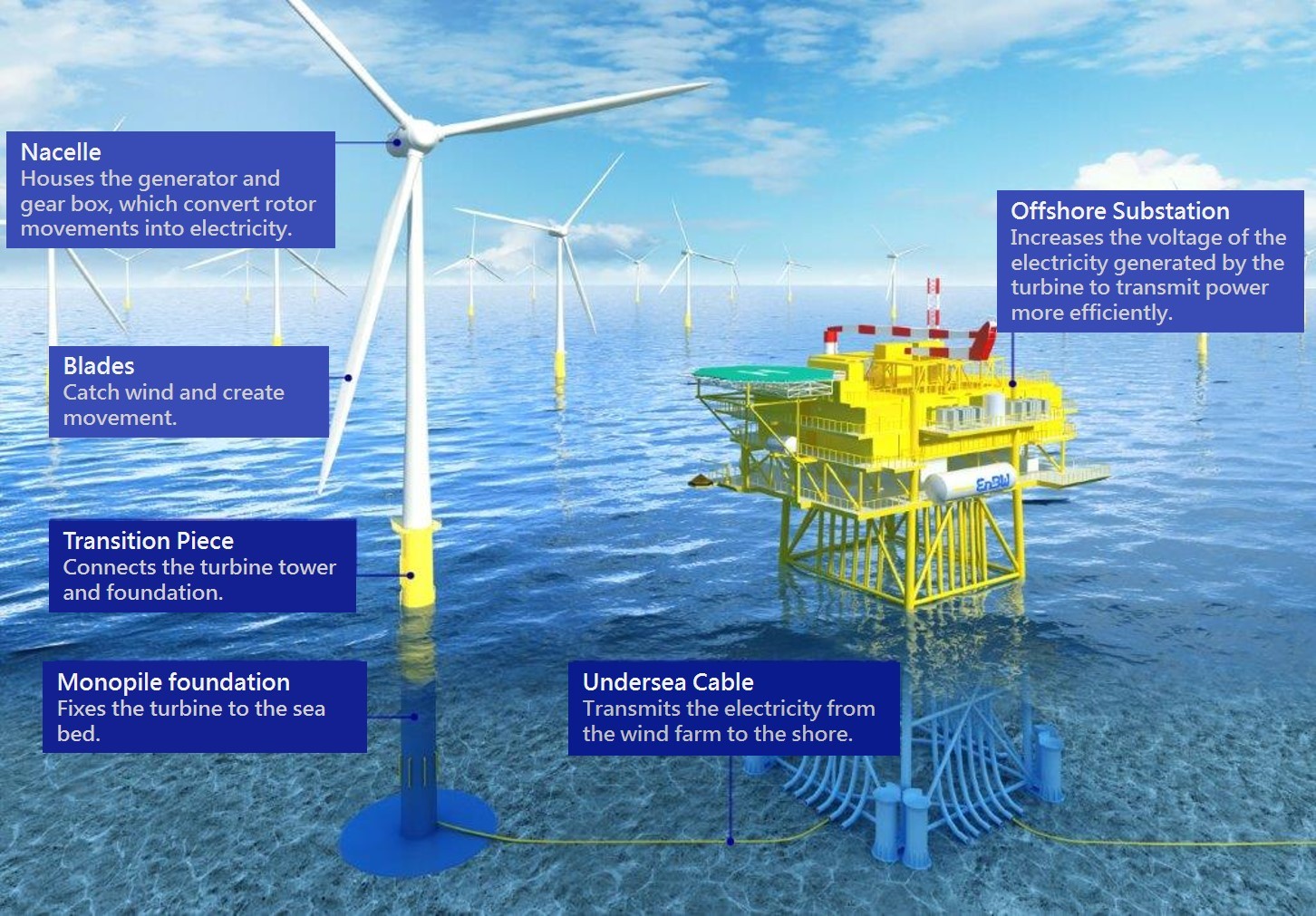
An offshore wind turbine comprises blades, nacelle, tower, transition piece and foundation. (Source: EnBW)
Turbines - the essential part of an Offshore Wind Farm
Turbines are the essential part of an Offshore Wind Farm. Without turbines, the winds at sea cannot be converted into electricity. Offshore wind turbines may seem simple from the outside, but each turbine contains countless precision components, and every component, from the blades, generator and tower to the foundation, is a sophisticated topic of its own.
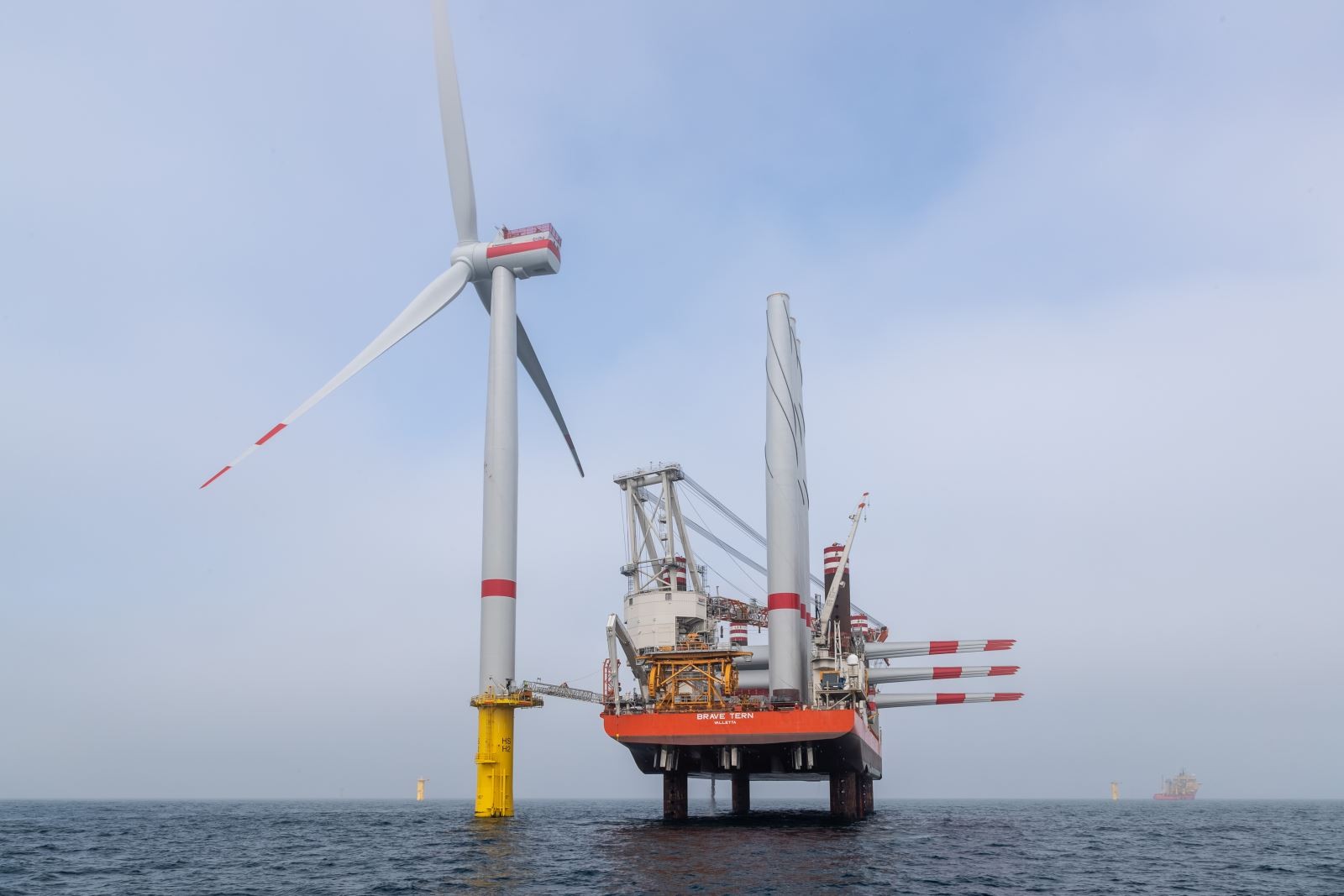
EnBW's new wind farm - Hohe See located in the North Sea. The blades are 75 meters long and the towers are over 100 meters in height. (Source: EnBW)
Blades and Nacelle
The blades and nacelle are positioned at the top of an offshore wind turbine. The blades turn as the wind exerts forces on the blades, which creates movement and spins the rotor that drives the generator and gear box in the nacelle located behind the blades and convert rotor movements into electricity. The length of the turbine blades varies depending on the designed capacity. Hohe See, EnBW's latest OWF in the North Sea, uses turbine model SWT-7.0-154 produced by Siemens Gamesa, and it was fitted with 75-meter length . [Note 2].
Tower
The tower is the backbone and support of an offshore wind turbine. The top of the tower is where the blades and nacelle are installed, whereas the bottom of the tower is fixed to the foundation. Generally speaking, winds are stronger the higher they are above the surface of the sea; therefore, taller towers allow for greater capacity to harvest wind energy. Hohe See, for example, uses towers that are more than 100 meters or 30 storeys tall [Note 3].

EnBW mainly uses monopile and jacket foundations, and is actively exploring the use of floating foundations. (Source: EnBW)
Foundation
The foundation is the legs that enable a turbine to plant itself firmly above the seabed. As technology evolves, wind turbines are being designed with higher capacity and to work in deeper waters, both of which require more sophisticated designs for the tower, as well as the foundation that supports it.
EnBW has mainly adopted two types of foundation today: monopile foundation and jacket foundation. Generally speaking monopile foundation is suitable for shallow waters (20 to 25 meters) with firmer seabeds, whereas the jacket foundation is the most economical solution at depths more than 35 meters, because it does not involve drilling a large pile into the seabed and hence requires less steel [Note 4 ]. All 4 of EnBW's completed or in-progress OWFs (Baltic 1, Baltic 2, Hohe See and Albatros) have been constructed using monopile foundations. However, certain parts of Baltic 2 are located in areas with depths of more than 40 meters and were therefore constructed using jacket foundations.
Meanwhile, EnBW is actively exploring the possibilities of a floating foundation that can be used further away from shore at seas more than 50 meters in depth. EnBW currently has plans to apply this technology on its Offshore Wind Farm off California, USA.
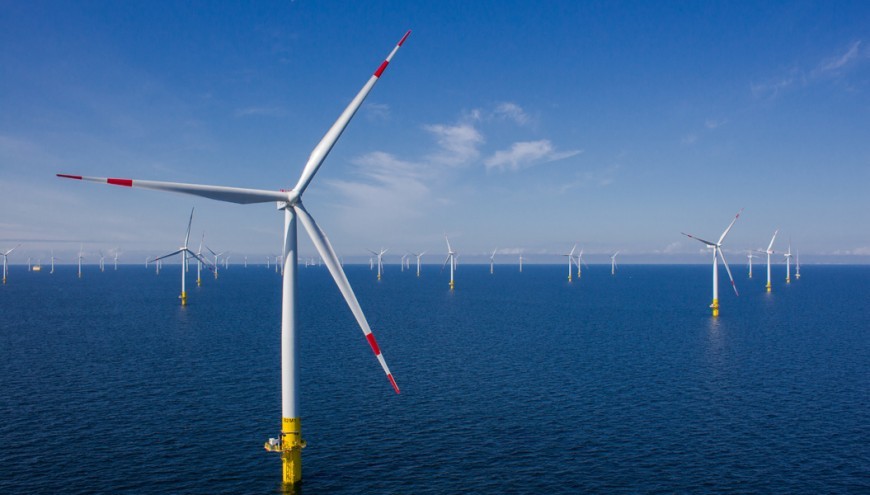
EnBW's offshore wind farm - Baltic 2 located in the Baltic Sea. (Source: EnBW)
Offshore wind energy is a thriving industry all over the world, and countries with access to maritime resources are taking pro-active steps to accumulate know-how and experience in OWF development. In Taiwan, the government has responded to this trend with plans to construct hundreds of wind turbines along the western coastline by 2025, and thus improve Taiwan's energy independence and sustainability.
Although Taiwan started later then European nations in offshore wind energy, it possesses the advantage of heavy industries such as steel, carbon fiber and shipbuilding, as well as the government's unflagging support in bringing together a "Marine Team" and a "Wind Team" to realize the immense potentials of an offshore wind energy supply chain.
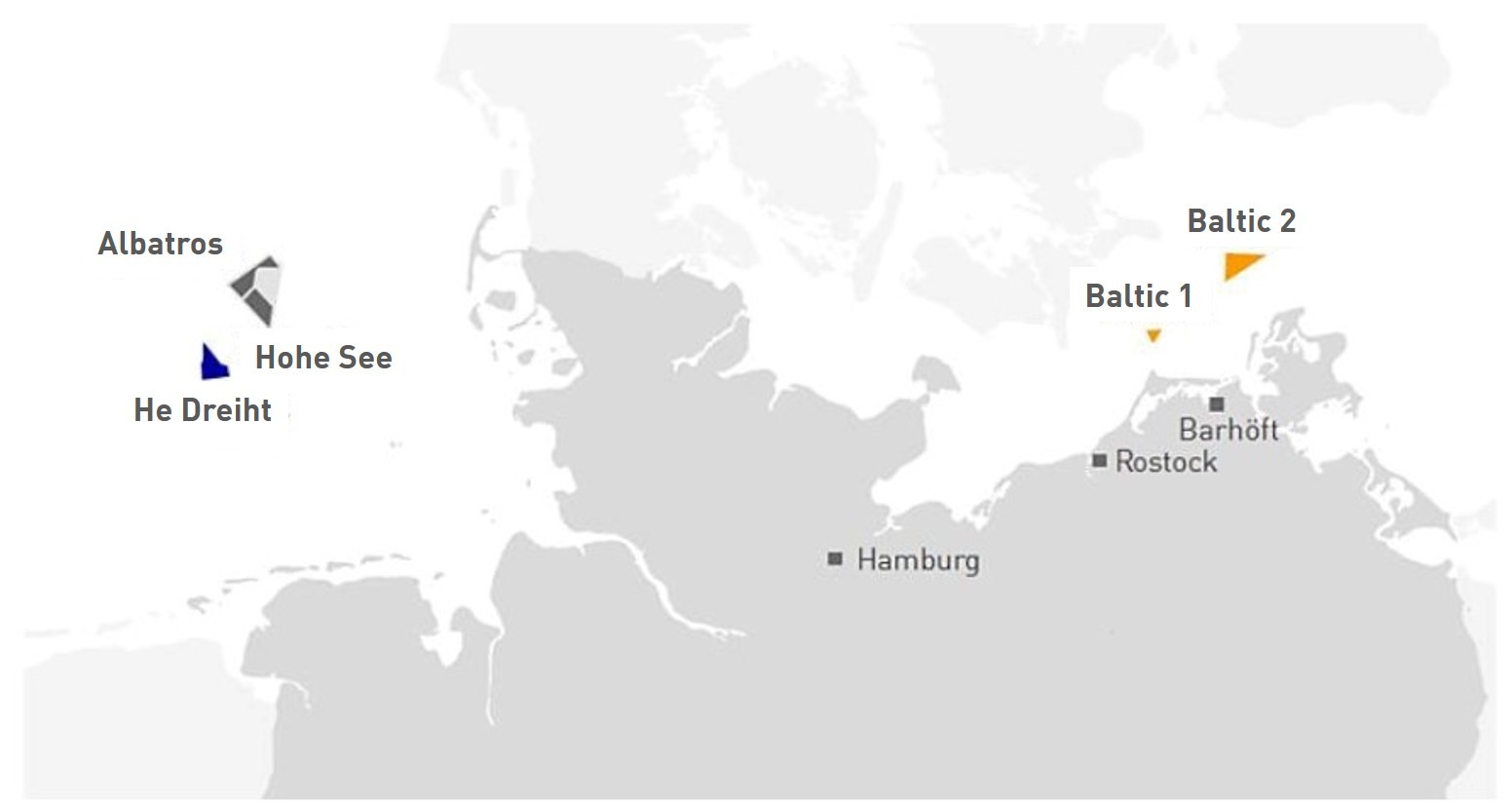
EnBW currently owns 5 OWFs in the Baltic Sea and the North Sea. (Source of picture: EnBW)
EnBW began development of Offshore Wind Farms in 2011, and currently owns 5 wind farms in Germany. The organization is actively expanding overseas, and aside from the Offshore Wind Farm off California that is about to commence development, EnBW is also partnering with Swancor and Macquarie Capital to invest in Formosa III, an Offshore Wind Farm located off the coast of Changhua in Taiwan. We look forward to this collaboration, and we hope to contribute EnBW's offshore wind power experiences and technologies in ways that will help Taiwan realize its energy and sustainability goals.

Due to rising anti-carbon and anti-nuclear sentiments around the world, countries have embarked on a search for cleaner and more sustainable alternatives, or “renewable energy sources,” as a solution for humankind’s ever-growing hunger for electricity. Renewable energy is the concept of converting natural resources such as tide, wind, sunlight and geoheat into electricity through processes that put little or no exhaust or pollution into the environment. In addition, the recurring nature of these energy sources provides humanity with an unlimited supply.
People have found ways to use a wide variety of renewable energy sources, and depending on the prevailing natural conditions, the ideal source of renewable energy may vary in different parts of the world. Today, the most popular forms of renewable energy are solar power, wind power, hydroelectricity, geothermal energy, and biofuel.
Solar Power / Photovoltaic
Solar power involves collecting radiation emitted from the sun and converting it into a form of electricity that can be connected to the power grid. Solar power equipment can be placed in wide, open areas such as farms and on top of factory roofs to generate electricity while also providing heat insulation and reducing energy consumption for buildings.
EnBW’s solar power development first began in Germany in 2008. The company has completed nine solar power plants in Germany to date, and is planning to construct Germany’s first market-priced, open-competition and subsidy-free solar power plant – Weesow- Willmersdorf – this year. Once activated, the new solar power plant is estimated to supply power for 50,000 households nationwide and reduce CO2 emissions by 125,000 tonnes worldwide.
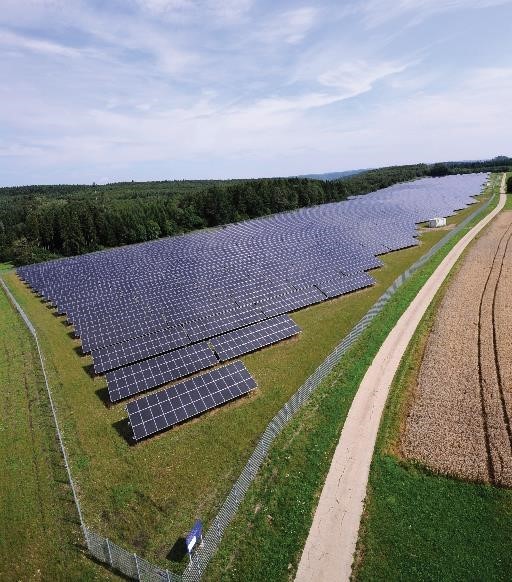
EnBW solar power plant – Leibertingen (source: EnBW)
Wind Power
Wind power uses the wind to push turbine blades, which drive generators to generate electricity. Wind turbines can be divided into two categories: onshore and offshore, depending on where they are installed.
Onshore Wind Power
Onshore wind turbines are mostly installed in coastal areas and plains where the terrain is relatively flat and free of obstruction. As technology evolves, the cost of wind power has dropped substantially, making it a very financially competitive renewable energy source.
EnBW has established onshore wind farms near many cities in Germany to deliver an aggregate capacity of about 470MW (2017). In addition to building new wind turbines in Germany, EnBW is also seeking to expand renewable energy services into Sweden and Turkey.
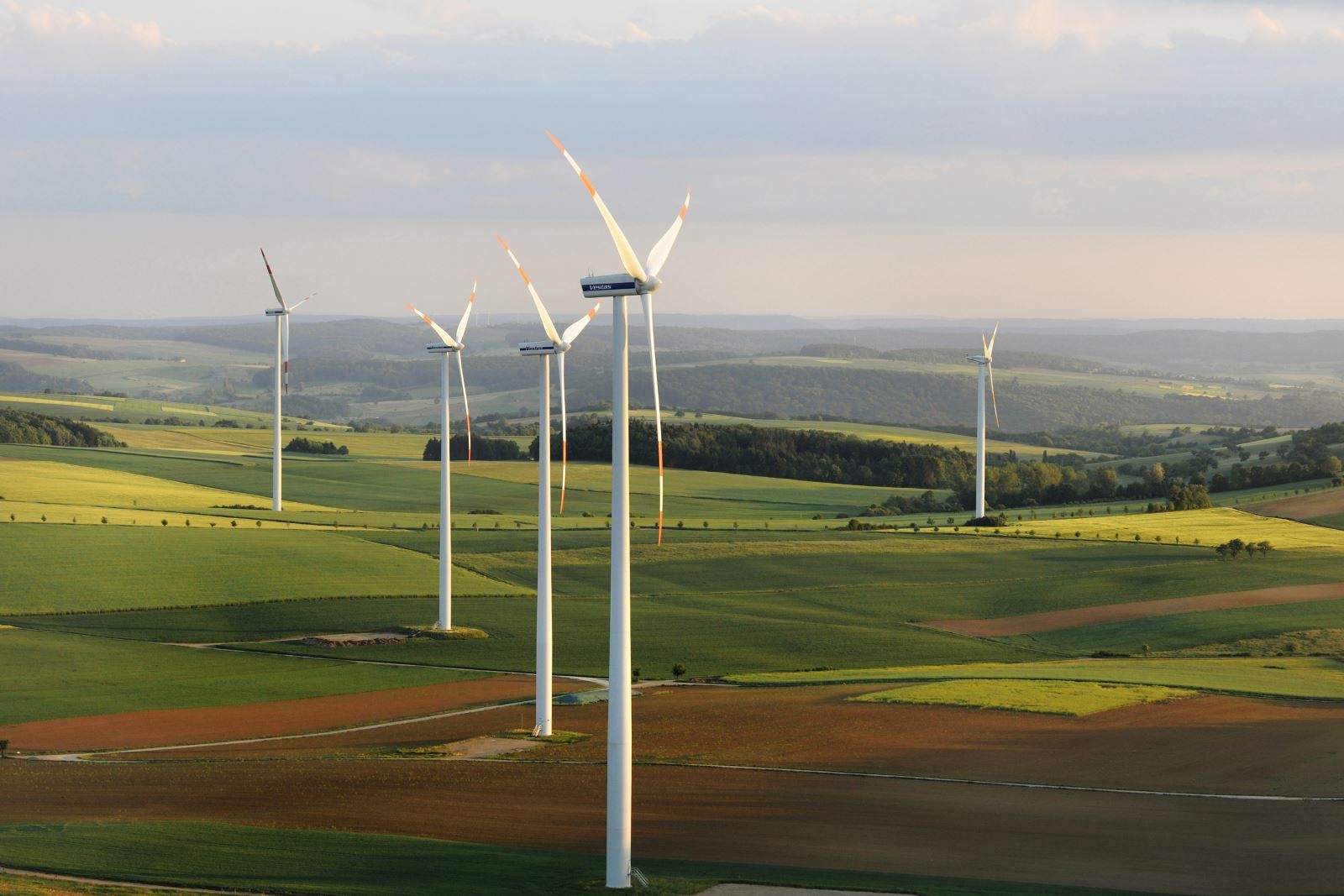
EnBW’s onshore wind farm located in Eisenach (source: EnBW)
Offshore Wind Power
Offshore wind power, which involves the construction of wind turbines at sea, has been one of the fastest growing forms of renewable energy in recent years. Offshore wind farms offer higher power capacity than their onshore counterparts due to the stronger winds at sea and lower disturbance to nearby residents. However, the difficulty of working at sea makes electricity more costly to generate.
In 2011, EnBW constructed Germany’s first commercial offshore wind farm – Baltic 1 in the Baltic Sea, which was followed by Baltic 2 in 2015. By 2018, EnBW had 336MW of offshore wind power capacity in operation, and with two additional wind farms (Hohe See and Albatros) commencing operation in the North Sea, EnBW expects to supply power to 710,000 German households by the end of 2019. Having foreseen Taiwan’s ideal potential for offshore wind farm development, EnBW joined SWE and Macquarie Capital in investing in Formosa III and aims to stand out among the competition in phase 3 of Taiwan’s offshore wind power development.

EnBW’s offshore wind farm – Baltic 1 located in the Baltic Sea (source: EnBW)
Hydroelectric Power
Hydroelectric power seeks to turn potential energy into electricity, using water current to drive turbines. Humankind has a long history using hydropower to generate electricity, and it is also one of the most popular renewable energy sources to date.
EnBW’s involvement in hydroelectricity dates back more than a hundred years. Currently, the company operates 67 hydroelectricity stations/plants throughout Germany with a total capacity of 2,700MW – 10% of all the energy it generates. EnBW continues to increase its hydroelectric capacity, and once expansion of the Iffezheim hydro plant is completed, EnBW will own one of the largest run-of-river power plants in Europe.
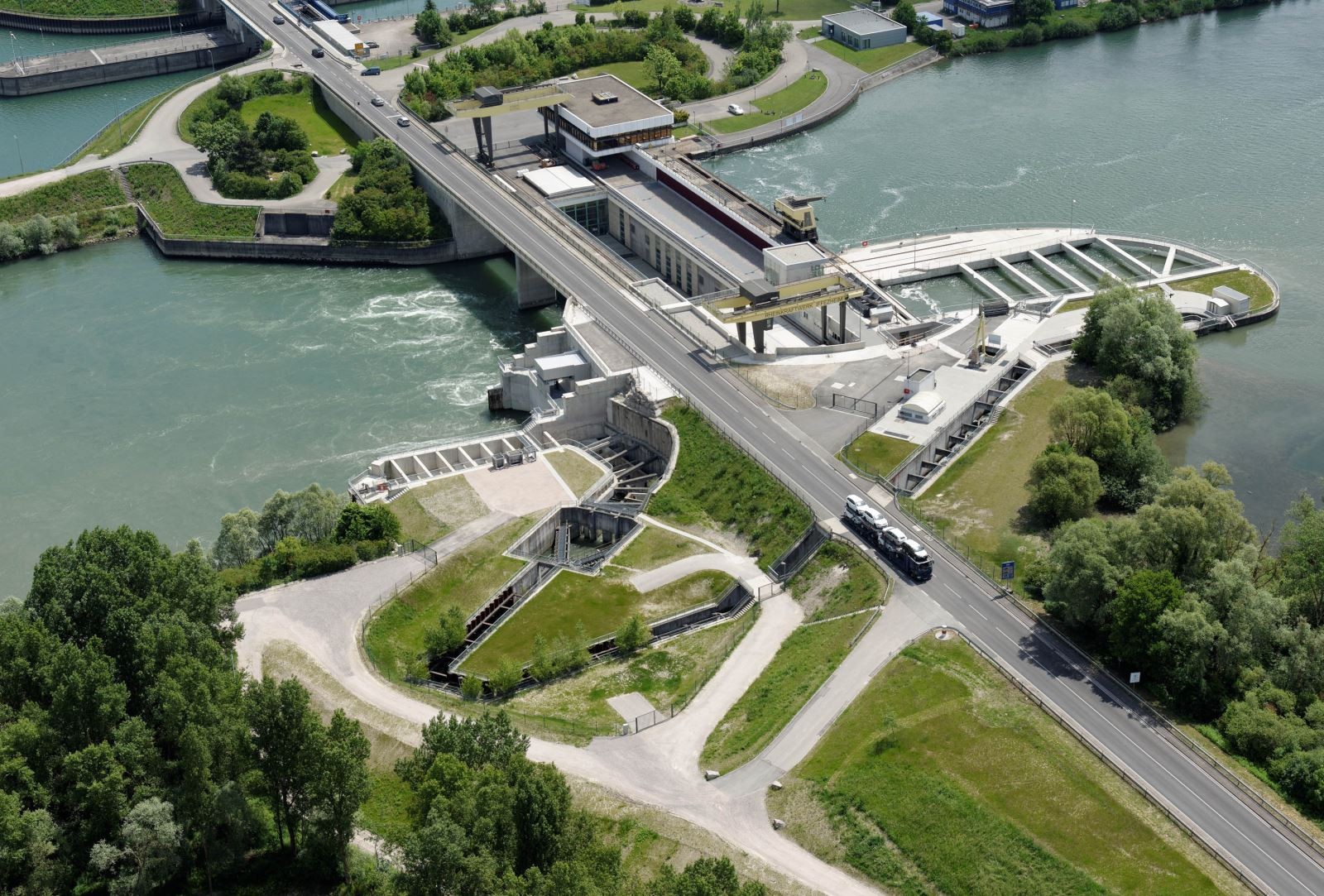
EnBW’s Iffezheim hydro plant (source: EnBW)
Geothermal Energy
Geothermal energy draws heat from magma inside the Earth’s crust and uses it to boil water, which creates steam and drives turbines for power. The difficulties associated with the development of geoheat have limited the scale of production and made it a less popular source of renewable energy.
EnBW began researching geothermal energy in the 1980s and currently owns 2 geothermal plants capable of meeting the annual power requirements of 3,600 households. In addition, EnBW plans to share excess geoheat with residents near the power plants for more efficient use of resources.

Geoheat in power generation (source: Unsplash)
Biomass and Biofuel
Biomass and biofuel comes from converting organic substances such as plants and bio waste into electricity through specialized processes. Unlike fossil fuel, biofuel is a carbon neutral energy source, meaning that its use does not affect the carbon content of the atmosphere. Biogas, for example, is a gas-based biofuel that can be used to generate electricity. Biogas can be created not only in swamps, but also from compost, wastewater, and household waste. For this reason, many landfill sites and animal farms have installed facilities to collect biogas and use it as fuel for heat or power on-site.
In Germany, EnBW is the largest supplier of biofuel in Baden-Württemberg. The company owns 5 biogas plants, with the capacity to supply the annual power consumption of at least 8,000 households.

Organic substances such as corn, fruit peels and compost can all be turned into biofuel for electricity. (source: EnBW)
The Immense Potential of Renewable Energy Worldwide
In their “RENEWABLES 2018 GLOBAL STATUS REPORT” published in June 2018, REN21 presented an overview of global renewable energy development for 2017. The report shows renewable energy investments having increased in amount and capacity due to reduced costs of equipment and rising awareness throughout the world. By the end of 2017, renewable energy had accounted for 26.5% of total power capacity. According to the “Renewables 2018 Market Analysis and Forecast Report” published by the International Energy Agency (IEA), renewable energy sources are expected to account for one-third of total power capacity by 2023, indicating significant growth potential on a global scale.

2018 EnBW installed energy output in MW (source: EnBW)
EnBW’s renewable energy goals have been clearly outlined in the “EnBW 2020 Strategy” published in 2013, which involves “increasing renewable energy sources to 40% of total capacity by 2020, and 55%-60% by 2035.” As of the end of 2018, EnBW generates 27.9% of its electricity from renewable energy sources in Germany, including 19% from hydroelectricity, 3% from offshore wind power, 5% from onshore wind power, and 1% from other sources. Because renewable energy sources are highly dependent on changes in the natural environment, EnBW has developed an accurate forecast system to predict and allocate different sources of renewable energy, thereby ensuring the stability of power supplied. As a provider of integrated energy solutions, EnBW not only explores new sources of renewable energy, but is also committed to creating robust power supply systems. Through the use of smart power grids, EnBW is able to ensure the reliability of the connected renewable energy supply and coordinate between various energy sources to ensure stable power supply 24 hours a day, thereby contributing to energy transformation.
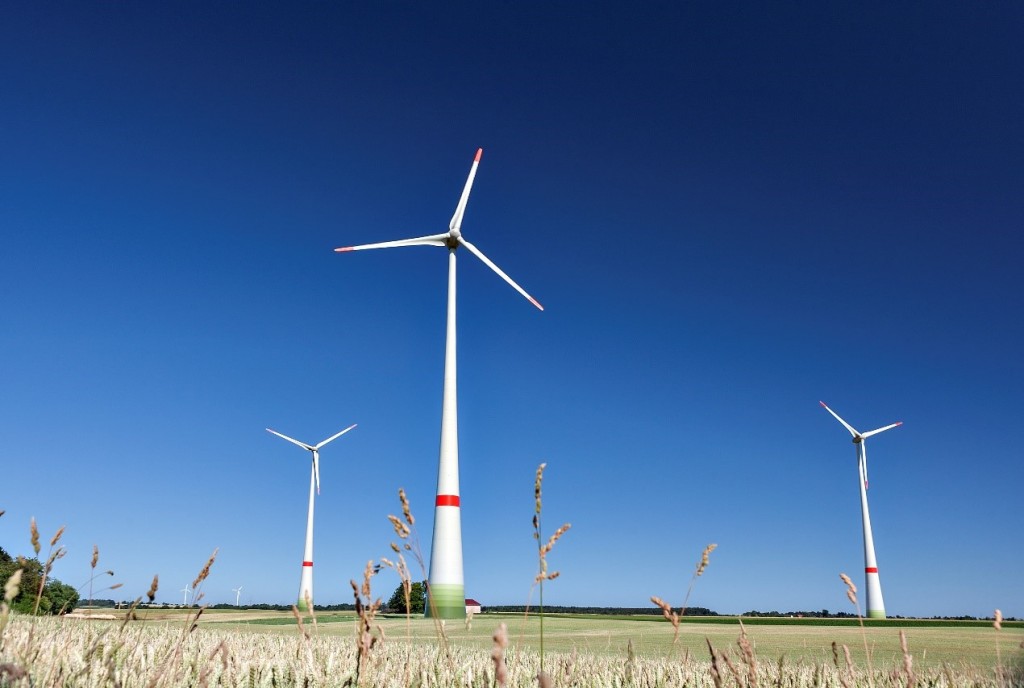
Modern global energy strategies, whether they involve more extensive use of renewable energy such as wind power, hydroelectricity and solar power or incentives or deterrents for reducing conventional energy sources, are all intended to achieve one common goal: decarbonization – reducing the use of fossil fuels and minimizing damage to the environment.
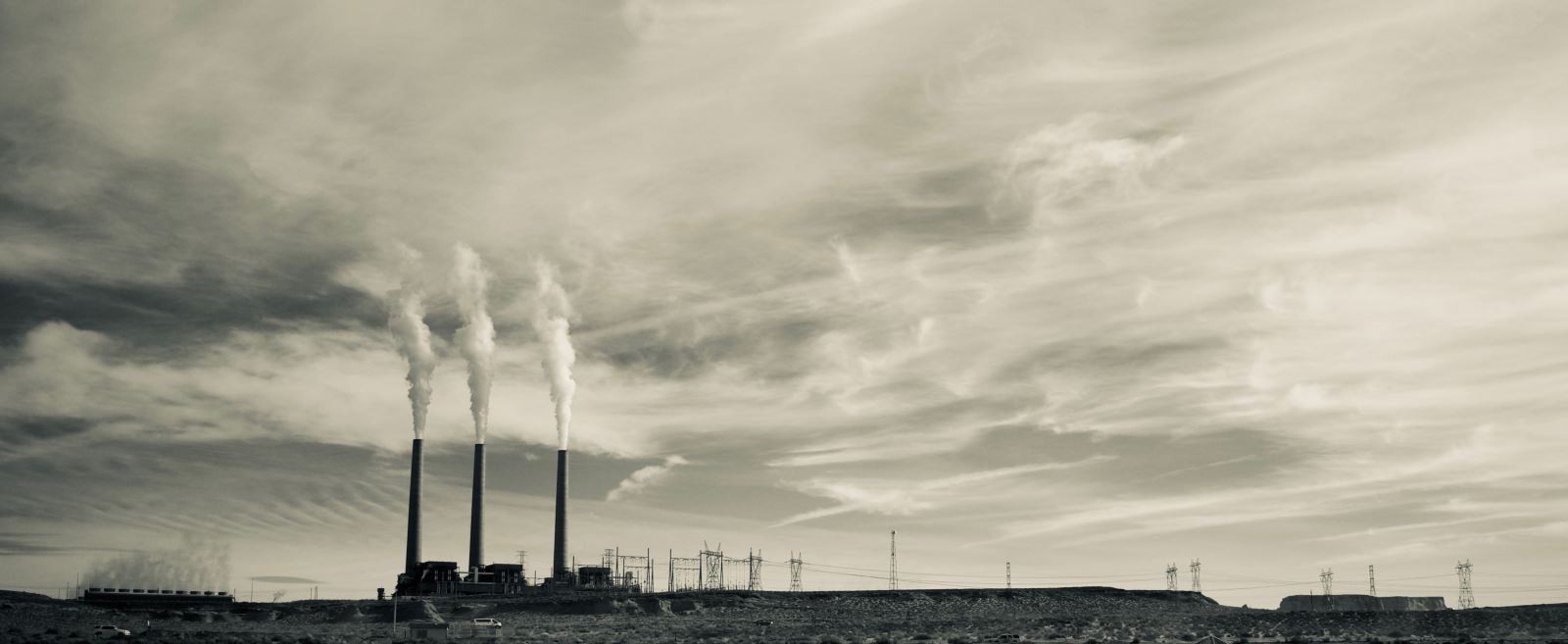
Source: Aditya Joshi. From: https://unsplash.com/photos/sfCugNOdUGc
An energy reform that takes decades and needs global participation
Decarbonization refers to the process of reducing gaseous carbon compounds released into the environment. These gases are released mainly from the combustion of fossil fuels such as coal and natural gas and are the major source of greenhouse emissions.
As industry has progressed, the demand for energy has increased, causing a greater volume of coal to be used for power generation, manufacturing and transportation. This process has released a high volume of greenhouse gas into the atmosphere and poses an extreme burden on the environment, resulting in weather phenomena, such as higher atmosphere and ocean temperatures, thinner snow, rising sea levels, snowstorms, droughts and heat waves.
The issue of carbon emission and its damage to the environment started gaining attention in the 1990s. In 1992, the UN passed the “United Nations Framework Convention on Climate Change” (UNFCCC) and began holding annual climate change conferences as a means to review the decarbonization progress of each nation. The “Kyoto Protocol” was signed in 1997 to maintain greenhouse gas at an appropriate level, while in the Paris Agreement of 2015 all participating nations specifically pledged to keep the rise of average global temperatures within 2°C compared to pre-industrial levels in order to prevent irreversible damage to the Earth.
Germany’s three decarbonization actions: Climate Change Law, carbon pricing, and renewable energy
Germany was one of the first countries in the world to begin decarbonization. Between 1990 and 2017, Germany not only managed to reduce domestic CO2 emissions by 28% or 348 million tons, but also fulfilled its Kyoto Protocol reduction targets to perfection.
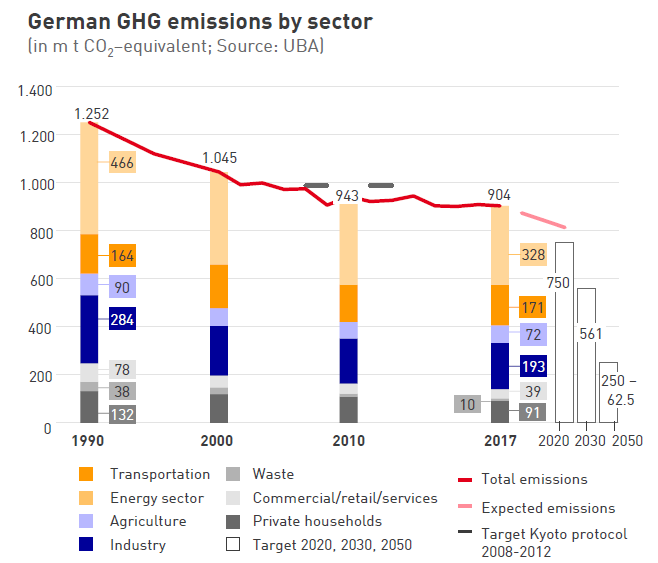
Germany GHG Emission Chart. Excerpted from EnBW Factbook 2018.
Germany’s successful attempt at reducing carbon should be attributed to three government strategies:
“Climate Change Law”: defining clear reduction targets and assessment measures
The German government has set carbon reduction targets in its laws over 10-year intervals. Meanwhile, the federal government has instructed local governments to devise locally customized reduction measures and adopt systematic approaches to decarbonization.
Carbon pricing: a user-pay deterrent
Carbon pricing has been recognized by many international organizations, government bodies and businesses as one of the most effective carbon reduction measures. Approximately 40 countries and more than 20 cities worldwide are currently levying carbon taxes as a means of reduction, or are planning to do so. The German government not only supports this idea, but also consistently recommends it to all G20 nations.
Renewable energy: eliminating dependence on coal
Germany has been persistent in the development of renewable energy as it aims to eliminate dependence on coal and natural gas. Between 2019 and 2020, Germany plans to increase the capacity of onshore wind power and solar power plants by 4GW each, and at the same time to expand the scale of offshore wind farms so that renewable energy accounts for more than 65% of the nation’s total power capacity by 2030.
Meanwhile, the German government has been quite specific about its decarbonization and sustainability goals, such as the nationwide reduction of carbon emissions to 55% of their 1990 level by 2030, and then to 70% by 2040.
EnBW adopts balanced approach towards decarbonization
EnBW has outlined clear goals and strategies in response to Germany’s energy transition and decarbonization efforts.
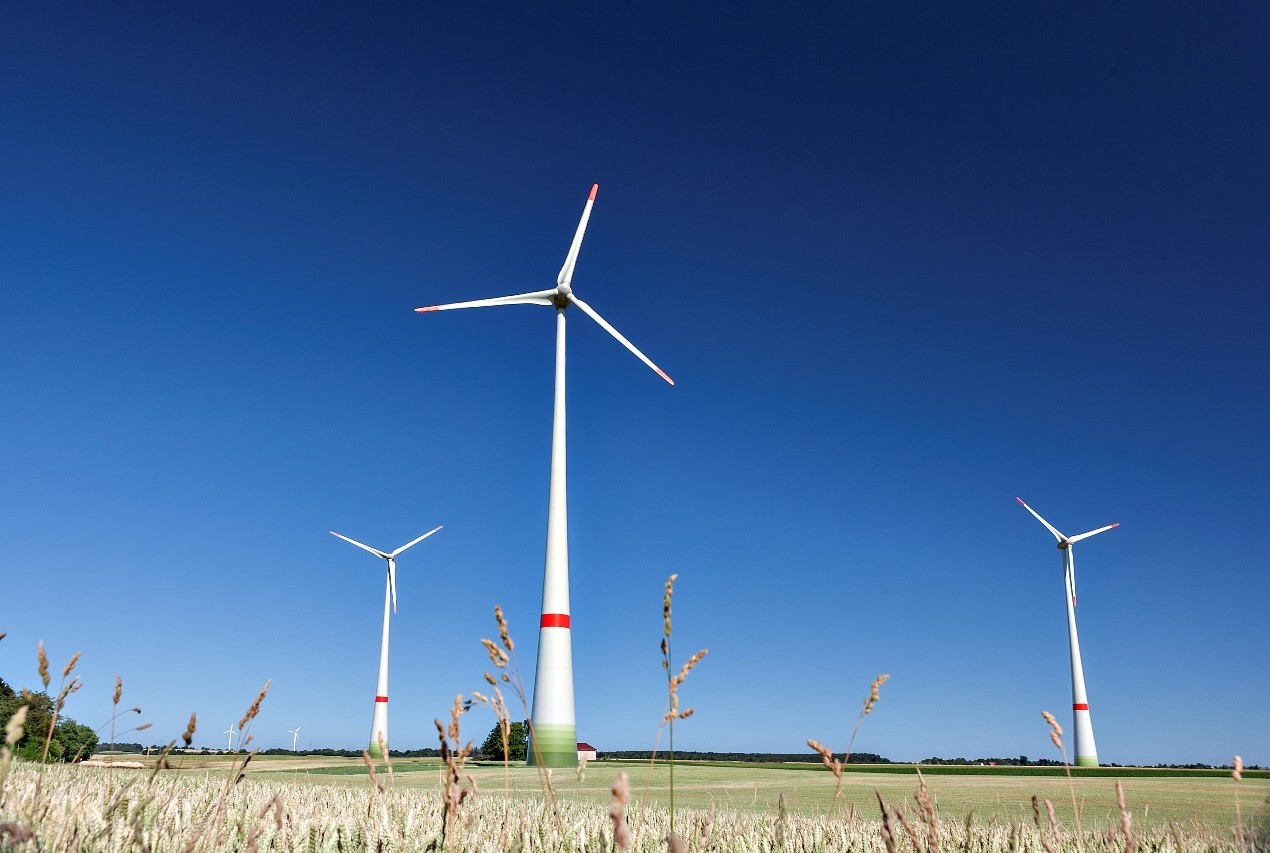
According to EnBW, one of the indicators that best reflects decarbonization performance is “carbon intensity”, which measures the volume of CO2 emissions per unit of GDP. Such methods as raising domestic coal prices, energy taxes, and carbon emission fees are widely perceived as the most effective ways of reducing fossil fuel, and therefore carbon intensity.
In November 2018, EnBW issued a joint statement with several other companies including Ørsted, Siemens and E.ON recommending the EU Emission Trading System impose a carbon price floor on transportation and construction activities. Dr. Frank Mastiaux, CEO of EnBW, said: “Imposing a minimum carbon price would have a great effect on conventional, coal-based manufacturers, causing them to switch towards natural gas at a faster pace. Furthermore, it would stimulate investments into renewable energy and speed up expansion of the industry.”
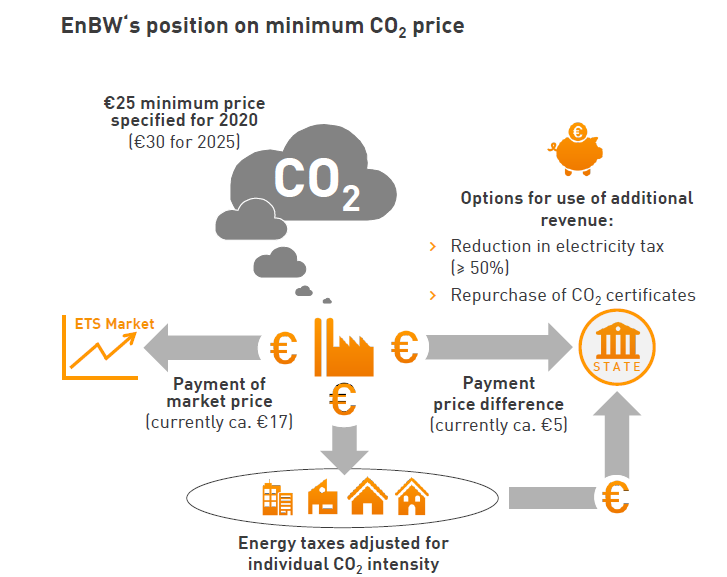
EnBW considers a minimum carbon price to be effective in reducing the use of fossil fuels while decreasing taxes imposed on other low-carbon energy sources. Excerpted from EnBW Factbook 2018.
In addition to advocating an increase in carbon pricing, EnBW is also committed to reducing CO2 emitted during power generation, including the renewal of outdated equipment at the Rheinhafen steam power plant with newer, more efficient RDK 8 modules. With respect to green energy development, EnBW plans to increase the capacity of its offshore and onshore wind power plants by 1.5GW and 2GW, respectively, by 2025. To overcome the relative instability of renewable energy sources, EnBW is actively exploring improvements to the energy infrastructure and constructing smart, reliable power grids to satisfy everyone’s needs.
From 2015 to 2018, the Earth experienced the highest temperatures ever recorded in human history. Carbon emissions and the resulting climate changes and air pollution have snowballed to a point that demands an immediate response from everyone on Earth. In light of this reality, EnBW has set a goal to reduce the carbon intensity of its power generation by 15% to 20% (compared to 606g/kWh in 2015, the baseline year) by 2020. EnBW will continue taking pro-active steps toward preventing climate change and reducing carbon emissions.
